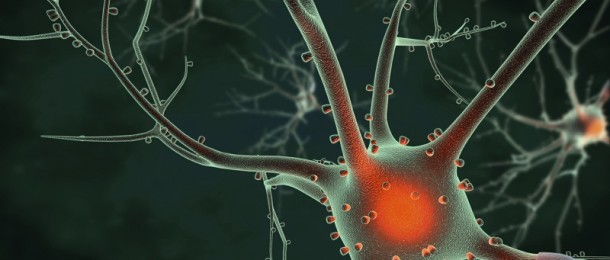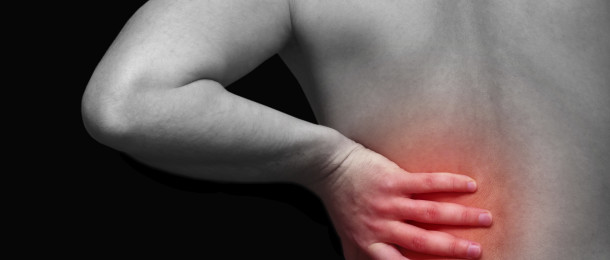5 Common Causes of Chronic Pain

If you suffer from chronic pain then you know just how devastating it can be to suffer without relief. You know you have a pain, you feel sick, but not one of the many doctors you have seen can identify a source for your pain. It must be very frustrating to know that even the doctors don’t have an answer for you.
After many tests, procedures an examinations, medical professionals have offered you no help and have begun to treat you like you are just making up the pain to continue to receive pain medication. But you would do anything not to need the pain medication or the doctors. There may be a new avenue to try, and it focuses on your mental health, not your medical health. There are different causes of chronic pain, which leads to different types of pain being felt by an individual. We’ll explore the common causes of chronic pain, and how to ease this pain.
Causes of Chronic Pain
The brain is so powerful it can make your body think it has pain. In fact, there are many mental illnesses that actually cause physical pains on a chronic basis.
Mental illnesses such as somatoform disorder, conversion disorder or pain disorder can literally make a person feel pain even though there is no medical cause for the pain. These types of pains can be acute or chronic. Acute pains are temporary and don’t last for very long but they are very noticeable and cause you a lot of discomfort. Chronic pain can last for months or even years without any resolution.
Physical pain can act like a signal, letting us know there is more emotional work to be done. This is why it is so important to address any mental health symptoms that could be causing your chronic pain. Some other mental health disorders that have been shown to produce pain are depression and even post-traumatic stress disorder.
Somatoform Disorder
Somatoform disorder is a mental health illness that makes a person feel chronic pain but there is no physical reason for the pain they are feeling. The diagnostic and statistical manual has defined somatoform disorder as a person having one or more physical complaints but when evaluated medically, no source of the pain can be found. Because of this, people seek medical attention rather than psychiatric care.
Unfortunately, they are rarely helped when they see a medical doctor for this because normally, no medical issue can be found. In addition, patients with this disorder do not believe their problem is psychological mainly because they do actually feel pain. They can’t associate their pain as being a brain problem. When someone feels an actual pain, whether real or not, it is hard to convince them that their pain is really in their mind and not their body.
Conversion Disorder
Conversion disorder is defined as losing the functioning of a physical body part but with no physiological reason for the malfunctioning. These can include paralysis, temporary blindness, loss of smell, or loss of voice.
Conversion disorder usually starts after a traumatic event or psychological conflict. People with personality disorders such as bipolar have proven to experience conversion disorder more times than those without a personality disorder.
Symptoms can last a few days or a few weeks. The best treatment is talk therapy and learning how to cope with stress. Working through your mental health issues with a therapist can help relieve and possibly prevent conversion disorder symptoms.
Pain Disorder
This disorder also deals with the chronic pain felt by a person but the diagnosis is usually related to their psychological problem. Symptoms include feeling helpless about the ability to get relief from pain management, insomnia, fatigue, depression, and anxiety. The person with pain disorder cannot function in a job or in social settings due to their disability.
Sometimes doctors prescribe prescription medications such as opiates to these patients thinking they may have fibromyalgia. However, by the time they realize it is a psychological disorder, the patient is already addicted. Convincing the person they do not need pain medication is nearly impossible due to the brain becoming dependent on the drugs. The brain does not want to quit opiates and it will do what it takes to keep you medicated.
Withdrawal from pain medications is also a hindrance to people quitting their use of the drugs. Furthermore, people who are prescribed pain medications do not necessarily consider themselves addicts because their drugs were given to them by a doctor.
Depression and Chronic Pain
Depression contributes greatly to chronic pain involving arthritis, migraines and backaches. Some reports show that even chest pains and digestive problems can be related to depression. Many people diagnosed with mood disorders complain of physical ailments that have caused them physical and mental disabilities.
Depression can make you feel fatigued and it can be a struggle some days just to get out of bed. A person with severe depression can even become neglectful to their physical health as well as their mental health.
If you are dealing with pain that seems to come around for no reason, take an assessment of your level of depression. You may just find that a very treatable disorder like depression is leading to your physical ailments.
Post-traumatic Stress Disorder and Pain
Post-traumatic stress disorder is an anxiety disorder. It can cause physical pains after a traumatic event. Some examples of post-traumatic stress disorder are fighting in combat during war, sexual abuse as a child or adult, witnessing a murder or even witnessing domestic abuse of a parent.
Post-traumatic stress disorder, if not dealt with in therapy, can start to show itself through physical pain. Suppressed symptoms of post-traumatic stress disorder can be damaging to mental and physical health. These symptoms may include body aches, stomach pains, headaches, and trouble sleeping. One report states that up to 35 percent of people with chronic pain have some form of post-traumatic stress disorder.
Cognitive Behavioral Therapy and Healing
So how do you deal with chronic pain that may be related to a mental illness? Seeing a Psychologist is essential for improvement. A mental health professional can correctly diagnose your disorder and set up a treatment plan to help improve your mental health and ease the physical pains you are feeling. Cognitive behavioral therapy and possibly medication can be a great combination in helping you overcome chronic pain caused by mental health disorders.
Now is the time for you to deal with your pain. You deserve to live pain free and if healing your mental health can get you that life, it is worth every effort. Make today your day to start healing!
5 of the Biggest Myths about Chronic Pain

Chronic pain is a sadly misunderstood topic – and it’s easy to see why. It’s not exactly natural, nor intuitive to experience pain on a constant level – and when you are subjected to pain, it’s hard to constructively think or analyze the situation.
Understanding the Basics
This isn’t a well-defined condition, in that some of its mechanisms are still relatively unknown to us, and there’s no way to tell what the underlying cause of the condition is in one patient to the next without a careful, professional diagnosis. However, the actual definition of this type of pain is simple, and well-known – and may help shatter some of the first few myths associated with this dreadful condition.
As a medical condition, this type of pain can be defined as any pain lasting more than 12 weeks. Note that there is a difference between acute pain and chronic pain: that difference lies in the duration and intensity. Acute pain is normal, natural, and wholly necessary for the basic function of a human body. Pain that is chronic, however, is not that. It’s like an alarm system gone rogue, in the worst of ways. Before anyone can help fix your condition, however, you must first understand what it is – and what it isn’t.
Without pain, we’re much more likely to injure ourselves, or even die of genetic or unforeseen complications without any warning signs, including common medical conditions like appendicitis. To make things easy and clarify some of the biggest questions surrounding pain, we’ll tackle five common myths.
Myth 1: It’s all in your Head
We can all trace the origins of this thought. You feel pain – it’s sharp, or dull, or it comes and goes, but in every case, it’s pain that has been there for weeks and just isn’t going away. So you go to the doctor and hope for a sound and clear-cut medical diagnosis that won’t set ablaze your finances, or increase your risk of a heart attack.
Instead, you’re told that there is no apparent physical cause for your pain. Your first natural reasoning?
“Well, then it must be in my head.”
There is a definition for this – it’s called psychosomatic pain. However, psychosomatic pain isn’t chronic pain, and it’s rare that the origin of your pain is actually psychological in nature. Most of the time, the keyword here is that the doctor said “apparent physical cause” – this pain is still a treatable condition that can be traced to a malfunction in your nervous system, and it must be managed, not ignored.
Myth 2: Rest is the Cure-all for Pain.
Short-term rest can help the body recuperate physically and psychologically after a long, stressful day – but opting to be bed-ridden because of your pain won’t help your body magically set itself right again because pain is often something that won’t just fix itself like a cut or a bruise would.
Instead, you should try and be more active. Light activity and exercise can alleviate the symptoms of pain by flooding your brain with dopamine and other endorphins, even in cases of fibromyalgia, which is a condition of widespread physical pain, moodiness and memory problems.
There is a limit to how much time you should be spending hitting the weights, of course. Sometimes, chronic pain may mask a different ache, and putting your body under excessive stress isn’t the best response to that.
Myth 3: Prescription Medication isn’t Addictive when you’re actually in Pain
It’s common knowledge that pain medication, often in the form of opioids and benzodiazepines, is addictive. They’re not exactly as effective in getting people hooked as heroin is, but prescription drug abuse is still a concern with much validity, with as many as 2.4 million medication addicts within the past year.
Still, there’s this belief that pain medication isn’t addictive in cases where you actually are in chronic pain, or that you — with absolutely no prior history of drug abuse, and a dislike for drinking – could never possibly develop an addiction from prescription medication.
The truth is that physically dependent addicts won’t know how a drug or medication affects them mentally until they try it – and yes, pain medication is still addictive even when you are struggling with real pain. Remember that popular medical TV series, “House, M.D.”?
Myth 4: You can just push through it
In relation to the second myth in this article: no, this pain isn’t a minor pain you should ignore, or just “walk off”.
Typically there is a physical underlying cause for this pain – but there are times when that isn’t the case, as with psychosomatic pain. In these cases, the pain may eventually just go away.
That doesn’t mean you have to put yourself under the torturous stress of chronic pain when a simple treatment plan or a medication may help out. Pain management exists in its many forms for the simple reason that every person is different – and some treatment options work better for certain individuals than they do for others.
Myth 5: It’s all Part of getting Old
It’s easy to look at most aging individuals and assume that the aches and pains of aging are synonymous to this pain – but that’s a massive folly.
Yes, an aging body is more prone to injury, and depending on your genetics, age, environment and lifestyle, you’re likely to develop age-related conditions like arthritis and dementia not as a result of your age, but in correlation to it (that means aging doesn’t cause pain, but often the two go hand-in-hand).
This doesn’t mean that everyone ages into a senior life marked by pain – especially the chronic kind, which is by no means normal. The cause of your pain doesn’t relate directly to your age – and being a senior citizen doesn’t automatically mean you have to settle for a pain-riddled life because that’s the assumption you’ve held for decades.
 What is Pain?
What is Pain?
Pain is a part of life. It’s important for the body to be able to experience pain and use it to guide you through a safe, healthy path in life. However, chronic pain is fundamentally different from acute pain. In some cases, it can be seen as useless pain. There are times when this pain occurs because of an underlying disease – but far too often, it’s the result of nerve damage or some other cause that is unrelated to any actual illness of physical problem.
Defining pain itself is tricky – what qualifies as pain is different from person to person. Some experience their pain as a reoccurring, sharp sensation. In other cases, it remains steadily as a dull pain, accentuated by rarer surges of intensity. In some cases, it’s akin to a burning sensation, or perhaps something like a nerve pinch.
Chronic Pain Management
Because the underlying reason can come from a relatively lengthy list of options, the pain itself is experienced uniquely from person to person. It’s easy to see why pain confuses many in its vagueness and relative flexibility as a medical condition, especially in a field where technical precision is expected.
There is no magic pill, no 100% surefire answer, and no ideal treatment for any single case of chronic pain. But there are guidelines, tips, pain management techniques and treatment options to suit the needs of every single pain sufferer out there.
How to Change Your Diet for Chronic Pain Relief

Dealing with chronic pain can often be a life-long struggle, underlined by years of medication and therapy. To many, the only way out of the pain is through pills. But while medication can alleviate some of the pain, the long term side effects of medication-based pain management can be drastic, and in some cases, devastating. To list just a few, WebMD notes that most over-the-counter pain management meds may cause symptoms such as:
- Nausea
- Liver damage
- Heartburn
- Stomach ulcers
- And more
No one can suggest that life without pain medication is easier when dealing with chronic pain – but a constant, long-term overexposure to NSAIDs and other related meds can bring a host of other unwelcome issues to the table, calling attention to the need for sustainable and healthier alternatives, or supplemental pain management tips.
And among these, few carry as many widespread benefits to overall health, longevity, and quality of life as a change in diet. Changing your diet to include more antioxidant-rich, heavily nutritious anti-inflammatory foods can do wonders for chronic pain relief. But before we take a look at how diet and food affects your body and its relationship with chronic pain, we need to step behind the issue and understand how pain works.
What is Chronic Pain?
Pain isn’t meant to last very long in a properly-functioning body – it works as a warning system, an alarm that goes off sharply and shortly to warn you that something is very wrong, or when an underlying health condition reaches critical levels of danger.
Chronic pain, defined as pain that lasts for longer than three months, often occurs when your warning system is broken. This is especially common after injuries, as per Healthline, when nerves may be damaged to the point that they misfire and malfunction, sending pain signals when nothing is effectively wrong.
In other cases, chronic pain is the symptom of an underlying medical condition, like arthritis or spinal stress. And finally, there is psychogenic chronic pain – not caused by any physical factors, but by mental conditions like depression or anxiety, as per Very Well. So how does food play into all of this?
The answer lies in inflammation. While your food choices do not always cause inflammation or pain, they can easily exacerbate your chronic pain, and multiply its effect – or, when managed properly, lessen your symptoms and provide chronic pain relief.
How Food Affects Inflammation
Inflammation occurs when the body is fighting to remove foreign objects or bodies from its system, or when it is healing itself. It’s not necessarily a bad thing, as in its natural, healthy state, inflammation can be defined as hyperactivity in a specific part of your body, highlighted by higher temperatures and swelling.
But chronic inflammation, like chronic pain, means something has gone wrong, and your body is stuck constantly fighting what it perceives to be foreign cells, even if these are your very own.
When your body is injured, it draws on its own resources to heal that injury. Yet, as we all know, you are what you eat – and if your diet is primarily consisting of inflammatory foods, then you exacerbate the effects of arthritis and chronic pain. Red meats, sugars, refined oils, and hydrogenated fats are all common food items that, as per Harvard, increase inflammation in the body.
That is not to say meat, sugar, or fat is bad. Sugar is necessary for your body, as a source of fuel – but it is best consumed in the form of starches, in potatoes, and grains like rice. Fat is absolutely necessary for every major function in the body, and the absorption of vitamins – but too many seed oils, or any amount of trans fats will harm your body. Cold-pressed olive and coconut oils and fish are better sources of fat.
Meat, finally, is a clean source of energy and protein – but eating meat excessively without sufficient amounts of fruits and vegetables can lead to health consequences. One study in particular links meat to oxidative stress, obesity and inflammation. The exact mechanisms behind it are not exhaustively researched, but a suggested culprit is advanced glycation end-products, or AGEs.
What are AGEs?
AGEs are proteins bound to a glucose molecule, and the trouble with them is that the body has a hard time breaking them down, and thus releases an excessive amount of inflammatory messengers called cytokines, as per nutrition expert Julie Daniluk on CNN.
AGEs are most commonly linked to sugars, but are also far more present in cooked meats than in vegetables, as per a study by Jaime Uribarri, MD et al. However, meat and sugar consumption aren’t the root cause of increased inflammation – while the evidence suggests that they certainly promote it, many people suffer from exacerbated levels of pain because of a lack of anti-inflammatory foods, perhaps even more so than due to a diet rich in meat.
A Basic Anti-Inflammatory Diet for Pain Relief
One study showed no increase in inflammation following two months of increased lean meat. Instead, it may be that markers for inflammation go down not because of an elimination of meat from the diet, but an increase in antioxidant-rich, heavily nutritious anti-inflammatory foods, such as:
- Green leafy vegetables.
- Tomatoes.
- Fish fats.
- Berries and citrus fruits.
- Olive oils.
What all of these foods have in common are high levels of antioxidants, omega-3 fats, and polyphenols. Polyphenols are phytochemicals abundant in antioxidant-rich foods, and as per a study in the American Society for Clinical Nutrition, they are directly linked to the prevention of degenerative diseases such as cancer and heart disease.
Antioxidants, on the other hand, combat oxidative stress and help balance the body’s natural levels of oxidative stress. Oxidants, like inflammation, are necessary for a healthy immune system and fight to fend off foreign bacteria and viruses, but without antioxidants to limit the free radicals in your body, your risk of degenerative diseases like cancer and heart disease, and increased pain through inflammation, shoots up.
You don’t have to go vegan. As per Arthritis.org, a vegan or vegetarian diet greatly benefits from anti-inflammatory foods, but when mismanaged, can lead to deficits in B12 and iron. Aim to drastically reduce the amount of meat, sugar, and flour in your diet, and replace it with more the above foods, and other plant-based sources of starch and protein.
In Conclusion
Good food does a body good – that is about as simple as it gets. While the nutritional benefits of meat and dairy are noteworthy, excessive amounts of both is usually followed by a host of physical consequences.
More to the point, a diet lacking in fresh sources of micronutrients and phytochemicals – especially from dark leafy greens – can increase the lifetime risk of heart disease, cancer, and auto-immune diseases, and offer no chronic pain relief.
Do note, however, that not all forms of pain are managed effectively through a good diet. That being said, a good diet directly relates to the overall health and wellbeing of a person, bringing with it other benefits like a healthy weight, a stronger immune system, higher levels of alertness, and when paired with exercise, it can help keep a clear mind and boost self-esteem in cases of depression and anxiety.
Whether or not your chronic pain has anything to do with inflammation, the benefits of a nutritious diet should never be overlooked.
7 Tips to Help You Manage Chronic Back Pain

Are you burdened by chronic back pain? You are not alone, back pain is the second most common reason people visit the doctor in the US. If you have reported your pain to your doctor and told that you don’t have an acute injury and are just plagued with back pain that seems to have no cause, then there are easy ways to manage your back pain, so it stops interfering with you being able to lead a happy, productive life. Try one or more of these seven tips to help you manage your chronic back pain.
1. Replace That Stiff Mattress That May Be Making Your Chronic Back Pain Worse
One way that many chronic back pain sufferers unknowingly contribute to their own symptoms is by sleeping on an old mattress or the wrong type of mattress. Years ago, doctors recommended that sufferers of back pain sleep on very firm mattresses. Today, mattress recommendations have changed, and a survey conducted by Harvard Medical School actually revealed that people who slept on the firmest mattresses experienced the worst quality of sleep.
What is the best mattress for back pain? The answer actually varies from person to person. Only super-soft and super-firm mattresses should be avoided. To find the best mattress for you, visit a showroom on a day when your back pain is acting up and choose the mattress type that helps relieve this pain when you lie on it.
2. Choose the Right Computer Chair
Whether you sit at a computer desk all day long while at work or just spend a few hours in the evening browsing social media websites, sitting in the wrong chair can cause your back pain to worsen. Make sure the seat of your chair is cushioned and the back of their chair offers lumbar support.
3. Position Your Computer Properly
You also want to make sure that your computer is properly aligned with your line of vision to keep back pain away. If your computer is too low, then you may hunch your back as you look down at the screen.
Make sure that when you sit down at your computer, you can comfortably view the screen when looking straight ahead. If not, then adjust the height of your computer chair or purchase a new chair or computer desk that allows you to view the screen in a more comfortable fashion.
4. Make Heat Therapy a Habit
There are many easy ways to apply heat to your achy back, and you shouldn’t wait until your back pain is at its worst to do it. Heat relieves pain immediately by disrupting the nerve signals your back is sending to your brain that sense pain. However, it also increases blood flow to your back that aids in healing.
Try a heating pad on a “low” setting when you are at home and try the self-heating pads that you can stick onto your aching back when you are away from home.
5. Try TENS
TENS stands for transcutaneous electrical nerve stimulation, and this therapy has been proven to help relieve back pain. There are small, portable TENS units on the market today that you can use at home.
Similar to heat, the low-intensity electronic impulses the machine sends to your back interferes with the “message” your body is sending to your brain that tells it you are in pain. The mild electric current also causes your brain to produce endorphins, which are your body’s natural pain-killing hormones.
6. Hit the Spice Cabinet and Try Turmeric
If you have ever eaten an Indian curry dish, then you may have already tried turmeric and not even realized it. Turmeric has reached new popularity due to not only its taste, but also its great health benefits.
Turmeric has natural anti-inflammatory properties that make it very beneficial to anyone dealing with chronic pain,including back pain. Just mix 1/4 teaspoon into a small glass of milk or sprinkle it on a meal each day, and you may be surprised at how much pain relief it gives you.
7. Strike a Few Pain-Relieving Poses at a Local Yoga Studio
Strengthening your back muscles can help aid in pain relief as well as gentle stretching of them several times each week. You can help strengthen your muscles while stretching at the same time by performing yoga.
Simple Tips to Help You Manage Chronic Pain

Pain indicates that something is wrong with the body. It can slowly show up over time or it can come on suddenly after an injury. Pain can range from mild to severe, and can come and go or occur on an acute basis. Acute pain comes on all at once and is usually brief, commonly in response to an injury. Acute pain disappears once the underlying cause has been treated. So, if you develop acute pain after a broken arm, it should go away once the arm is treated.
Chronic pain, on the other hand, is long-lasting and returns often. It may result from an injury that did not heal correctly or an illness. Sometimes, no cause can be found. Chronic pain can persist for years. It affects your physical and emotional well-being.
Chronic pain causes more disability than heart disease or cancer, according to experts. How can you best manage chronic pain? Here are a few tips.
Eat the Right Foods
Diet can have a significant effect on your well-being. Inflammation in the body can be reduced through diet, treating the underlying cause of many chronic pain conditions. Research has found that patients that follow a strict Mediterranean or vegan diet have reduced levels of chronic pain. If possible, adopt a diet that includes large amounts of vegetables, olives, and other healthy oils. Foods that cause inflammation include chocolate, high-fat red meat, and processed foods. It is best to stay away from these foods if you suffer from chronic pain.
Yoga
Yoga has long been used to manage pain. This centuries-old practice provides stress-relief and helps to calm the mind. Pain often occurs because of chronic muscle spasms, and practicing the postures of yoga can help you train your muscles how to relax and lengthen, decreasing muscle spasms.
Check Your Hormones
Hormones are chemicals that are produced by your endocrine glands. They work much like messengers in the body. They send signals to the rest of your body to keep it functioning. Hormones control your metabolism, as well as many other important body functions.
Hormones are essential to your body and when released in excessive amounts or at wrong timings can disrupt major body systems. New research indicates that hormones are useful in treating chronic pain. Your physician can talk to you about hormone replacement therapy, which can help regulate your emotions and reduce pain.
Talk to a Professional
Talking to a therapist about your pain may help reduce it, according to the American Psychological Association. They have found that Cognitive Behavioral Therapy is effective for chronic pain. Cognitive Behavioral Therapy teaches you how to change your thoughts regarding troubles in your life before they become destructive. It also teaches stress management and coping skills for use during times of high stress.
Additional Ways to Manage Chronic Pain
When lifestyle and diet changes are not enough, you may need to seek additional methods to treat your pain. Always check with a chronic pain specialist to decide which alternatives are best for you. They can help you identify additional ways to manage chronic pain safely.
If you are reading this on any other blog than Comprehensive Pain Management Center or via my RSS Feed, it is stolen content without credit. You can find us on Twitter via @CompPainMgmt. Come and visit our blog at http://www.compainmc.com/blog/.
Relieving Chronic Back Pain with Innovative Treatments

The pain from degenerated or slipped discs can bring your daily life to a halt. You may find it difficult or even impossible to bend, lift heavy objects, or sit comfortably. Rather than treat the pain with prescription medications or trying to adjust your life to it, treatment options like disc denervation help with relieving chronic back pain.
What is Disc Denervation?
Disc denervation involves eliminating a nerve’s ability to cause pain. Doctors who specialize in this treatment use radiofrequency to detect what nerves in your back are causing the pain. They then inject a needle to disconnect the nerve.
This procedure has reportedly helped chronic back pain sufferers find relief from months at a time. They no longer have to rely on medications to kill the pain. They are also able to resume their normal range of motion without being compromised by nerve pain.
How is Disc Denervation Performed?
This procedure is done on an outpatient basis and typically only takes an hour to complete. The doctor uses a local anesthetic to deaden the area. People do not feel the injection of the needle or any of the heat or nerve disconnection.
Once the procedure is finished, the doctor then applies a bandage on the affected area. After spending a brief time in recovery, the patient can walk out of the facility and return home to rest.
Who is a Candidate for Disc Denervation?
Many people who have given up hope of ever finding relief from chronic disc pain may be good candidates for disc denervation treatments. Women who have given birth, for example, often develop slipped or degenerated nerves after undergoing epidurals during labor. The epidural needle may have contributed to the disc weakening or slipping out of place.
Further, the weight of carrying a baby can cause discs in a woman’s back to degenerate. Rather than spend the rest of her life with chronic back pain, she may benefit by undergoing nerve denervation.
Likewise, people who have suffered injuries due to falls, lifting heavy objects, or carrying out other tasks may want to consider this treatment option for chronic back pain. They can experience longer lasting relief and also go back to work without being compromised by chronic pain and discomfort.
Finally, people who worry about becoming addicted to painkillers may benefit by going through this operation. Many doctors prescribe powerful medications that help kill the pain of chronic disc degeneration. People who take these medicines, however, may build up a resistance to them and then have to up the amounts that they take to find relief from the pain. Rather than risk becoming addicted to painkillers, sufferers of slipped or degenerated discs may prefer to go through disc denervation.
Before going through this procedure, however, people are encouraged to consult with their primary care doctors to ensure that they are healthy enough to withstand the treatment. If they have conditions like high blood pressure, diabetes, or if they are breastfeeding, they may want to wait or choose another treatment for their chronic back pain.
Chronic back pain no longer requires that people take medicines or simply live with the pain. Sufferers can now go through disc denervation that will disconnect the nerves that are causing their back pain.
If you are reading this on any other blog than Comprehensive Pain Management Center or via my RSS Feed, it is stolen content without credit. You can find us on Twitter via @CompPainMgmt. Come and visit our blog at http://www.compainmc.com/blog/.
How Cognitive Behavioral Therapy Can Help with Managing Chronic Pain

You have likely heard of Cognitive Behavioral Therapy as a treatment for people who are suffering with anxiety and panic disorders, or with moderate to severe depression. While CBT was originally developed for emotional disorders, it may surprise you to learn that this approach can also be helpful for people with chronic pain from conditions like fibromyalgia or diabetic neuropathy. Here are some things you need to know about this type of treatment, how it can help with the pain, and why it works well in tandem with other methods.
Understanding the Basics
The underlying premise associated with CBT is that the range of negative emotions triggered by your health issue magnifies the pain you are experiencing. For example, the fact that you are living with fibromyalgia every day of your life leads to feelings of isolation, remorse, anger, and a host of other negative reactions. While it’s perfectly understandable that you would experience these and other emotions, they are actually making the pain worse.
Choosing to see a therapist and engage in a series of treatments using CBT is intended to help you gain more control of your emotions. As you begin to eliminate them one by one, that leaves room for more positive thinking. While your pain does not go away completely, you find that it interferes with your life less, and you find it easier to manage.
3 Domains of CBT
Thoughts
The thinking that goes on inside is the cognition domain and refers to all that happens inwardly, such as thoughts, images, memories, dreams, beliefs, attitudes, and where attention goes. All of these can contribute to negative thinking.
Feelings
This includes emotional and physical feelings and how an individual might understand and cope with them. Emotions can cause symptoms such as sleep disturbances, fatigue, and eating changes.
Behavior
This domain includes the way in which thoughts and feelings might make a situation worse, such as avoiding certain activities that would help to improve mood. It might also include the behavior that only leads to worsening mood, feelings, and thoughts, such as ruminating or berating oneself.
The way one responds to circumstances in life can have an influence on mood and feelings and thoughts. For instance, if Timothy was let go from his job after 14 years, he could either experience depressive thoughts, such as thinking that they no longer needed him or that he was letting his family down. Of course, this in turn would trigger certain feelings such as depression, discomfort, and hopelessness. And this in turn might lead to avoiding friends and family or activities he used to enjoy. And, of course, all of this could contribute to the experience of chronic pain.
However, he might see it as an opportunity to make a change in his life. He might have a positive thought about all the skills he has acquired over the years and how he can apply them elsewhere. As a result, he might feel optimistic, excited, and motivated, and he might start behaving in ways to acquire that new opportunity such as networking, planning for the future, and building a new career.
The difference in this example began in the way that Timothy inwardly responded to his circumstances. CBT would assist Timothy in finding the thoughts that might have led to depression or anxiety or stress, all of which can lead to chronic pain, and change those towards positive ones in order to change his life.
CBT in Action
In order for the treatments to have effect, it’s necessary for you to identify the emotions that are complicating your condition. As is true in many aspects of life, a problem that is given a name is easier to address than one that remains unknown or at least a little fuzzy in the mind. As part of the time you spend with the therapist, you will learn to examine each emotion as it appears.
Perhaps you suffer with a lot of discomfort in your feet and lower legs thanks to the neuropathy brought on by your type 2 diabetes. The stinging sensation coupled with areas that are numb leave you feeling discouraged and somehow less of a person. The therapist will have you zero in on those negative thoughts and consciously make the effort to replace them with positive ones. In this scenario, instead of discouragement and a sense of being inferior, you will seek to remind yourself that you still have all of your toes, you can still walk, and that your mind is just as sharp as it ever was. In other words, the pain triggered by the neuropathy is not enough to control every aspect of your life.
Using It For Pain Management
The use of cognitive behavioral therapy for pain management has three basic components:
Making the Connection
The first is helping patients understand the connection between thoughts, emotions, and their pain. This in turn can empower a patient to have more control over the pain they experience.
Coping with Pain
The second part of using CBT for pain management is providing coping techniques to use when pain becomes intense. Some of these coping mechanisms are relaxation techniques and the use of cues that immediately bring on a relaxed state. Using these tools can help to decrease muscle tension, reduce emotional stress, and divert attention away from stress. This also includes helping a patient find the thought pattern that contributes to the pain. Monitoring and documenting thoughts helps to easily identify the connections between them and the specific reactions to certain events in the day. For instance, if John wasn’t able to meet the expectations of his boss, and as a result had the thought, “I am worthless,” this might lead to feeling shameful and perhaps to worse pain in the body. Replacing thoughts with those that are more life affirming can facilitate pain relief.
Problem Solving
This component of CBT is the application of skills in daily life. For instance, learning when to use the techniques learned when pain flares up and becomes intense. Clinicians and patients might develop a plan together in order to manage chronic pain while not in treatment.
Cognitive Behavioral Therapy can be an essential ingredient in pain management. In fact, it is widely being used for a variety of physical and psychological illness, in addition to facilitating mental wellbeing, reducing anxiety, minimizing depression, and managing emotional and physical pain.
Progress and Setbacks
Like any type of treatment for physical or mental distress, CBT does not make everything all better after one or two treatments. You may experience setbacks along the way. Don’t beat yourself up if discarding negative thinking does not come easy at first. Many people require time to make the transition to a more positive frame of mind.
When you do have a day when it seems that no amount of effort has an impact, tell your therapist all about it. You will most likely be reminded of the days when you were able to reverse your thought processes and the pain was easier to manage.
Remember that CBT does not cure the underlying physical cause of the pain. That’s not its purpose. What it will do is provide you with a powerful tool that helps lessen the pain and its impact on your life. You will still make use of medication to deal with the underlying symptoms, although you are likely to find that the need to take something specifically for the pain will diminish.
If you are reading this on any other blog than Comprehensive Pain Management Center or via my RSS Feed, it is stolen content without credit. You can find us on Twitter via @CompPainMgmt. Come and visit our blog at http://www.compainmc.com/blog/.
Managing Chronic Pain to Improve Quality of Life

A warning sign that your body or mind is experiencing a problem, pain can appear suddenly or increase gradually over time. The sensation may be mild and intermittent or severe and persistent. According to the National Institute of Neurological Disorders and Stroke, untreated, acute pain can become a chronic issue. Persistent pain can occur because of an illness or an injury as well as distressing emotional events like grief and anxiety. The pain can linger for months or years and negatively affect your physical and emotional well-being. However, there are many things you can do to start managing chronic pain to improve your quality of live.
Tips for Managing Chronic Pain
While living with chronic pain can be difficult, it is possible to improve your quality of life and ability to function. Although advances in medicine have provided cures for some diseases and extended the lives of people suffering from a variety of illnesses, health care professionals are still struggling to understand and control chronic pain. Holistic techniques and programs focusing on the patient help individuals manage their pain. These interdisciplinary programs are designed to encourage those dealing with pain to regain control over their lives by taking an active role in their treatment.
Anti-Inflammatory Foods
Patient-centric pain management programs often incorporate diet and exercise regimes. The Journal of Alternative and Complimentary Medicine published a study confirming the ability of an easy-to-digest diet free of processed foods to alleviate inflammation, a major trigger for pain. In addition to aiding the digestive process and providing essential nutrients, a healthy diet reduces the risk of heart disease, helps keep weight under control and improves blood sugar levels. It is also important to stay well hydrated. According to the Mayo Clinic, dehydration aggravates chronic headaches and backaches. While it may be tempting to consume juice, coffee or soda, their diuretic characteristics make these beverages a poor overall choice. Water keeps you hydrated without excess caffeine, calories and sodium.
Exercise
Exercise helps with managing chronic pain by naturally increasing your endorphin levels. These brain chemicals block pain signals and improve the mood. Thirty minutes of daily exercise strengthens muscles by reducing the potential for injuries and illnesses. It helps you maintain normal weight, lowers the risk of heart disease and controls blood sugar levels. A regular exercise regimen along with relaxation techniques reduces stress, anxiety and depression, which can intensify chronic pain. Patients who are unable to engage in strenuous exercise may still benefit from meditation, yoga and massage. In addition to improving the quality of sleep and increasing your range of motion, massage therapy and yoga can reduce stress levels.
Lifestyle Choices
Lifestyle choices like smoking and excess alcohol consumption worsen chronic pain. People who smoke are more likely to experience chronic pain than people who do not smoke. An ineffective pain management strategy, alcohol interferes with the ability to cope with pain. Chronic pain sufferers should also consider joining a support group. Talking about the pain with others who suffer the same or similar problems give patients the comfort that they are not alone and helps with managing chronic pain. Other members of the group can provide encouragement and ideas on how to deal with chronic pain. The American Psychological Association recommends psychotherapy for pain sufferers. Biofeedback, cognitive behavioral therapy and guided imagery are techniques that also help you manage pain.
A comprehensive pain management program overseen by your doctor can improve your quality of life by helping you cope with the physical and mental effects of the condition.
If you are reading this on any other blog than Comprehensive Pain Management Center or via my RSS Feed, it is stolen content without credit. You can find us on Twitter via @CompPainMgmt. Come and visit our blog at http://www.compainmc.com/blog/.
What is a Ganglion Impar Injection?
For those who suffer from severe perineal pain, a ganglion impar injection may be the perfect procedure to alleviate their discomfort.
What is a Ganglion Impar Injection?
The purpose of a ganglion impar injection is to manage chronic pain in the genital, pelvic, visceral, perineal, and anal areas. Many of the candidates of this procedure frequently complain of a burning sensation with urination and/or defecation. The ganglion impar injection will stop the discomfort that is linked to the bundle of nerves that are receiving the pain.
How does the Procedure Work?
The ganglion impar injection is performed with the patient laying face down. The doctor will most likely place a pillow under the patient’s pelvis to ensure that the lower back resembles a flat surface. Next, the area of injection is numbed with local anesthetic. The doctor then uses fluoroscopy to guide the needle into the ganglion impar, which is a bundle of nerves that receives the pain associated with the distal urethra, vulva, perineum, and distal rectum.
There are two different types of blocks that may be used to treat the pain in the ganglion impar area.
Diagnostic Block: These blocks are primarily used for non-cancer related pain. The procedure consist of a steroid injection to ensure that the ganglion impar is really causing the patient severe discomfort. A diagnostic block is typically performed twice.
Therapeutic Blocks: These blocks use a neurolytic agent to treat the pain at the source. Therapeutic blocks are usually performed only once.
A ganglion impar injection is typically 15 minutes, and most people inform their doctors that the pain relief has lasted many weeks and even years.
What are the Potential Benefits?
As a minimally invasive procedure, the ganglion impar injection can be performed in the doctor’s office. Because there are numerous pelvic structures that have nerve fibers that travel through the ganglion of impar, a block performed in this area can treat many areas of pain simultaneously. After the procedure, most patients can expect between 50 to 100 percent pain relief from the injection.
If you are reading this on any other blog than Comprehensive Pain Management Center or via my RSS Feed, it is stolen content without credit. You can find us on Twitter via @CompPainMgmt. Come and visit our blog at http://www.compainmc.com/blog/.
Top Four Most Commonly Performed Injection Procedures for Pain
Some of the most common conditions that cause frequent pain include arthritis, herniated disc, scoliosis, carpal tunnel syndrome, headaches, shingles, and vertebral compression fracture. Fortunately, many interventional pain procedures can drastically reduce or cure the pain associated with these conditions. The following are some of the most common injection procedures for pain management.
Cervical Epidural Steroid Injection
Conditions such as spinal stenosis, herniated discs, and degenerative disc disease may cause pain in the arms, neck, and shoulders. Cervical epidural steroid injections will relieve these uncomfortable symptoms by reducing the inflammation of the associated nerves. This reduction in swelling is accomplished through the injection of anti-inflammatory medication into the epidural space. Depending on the severity of the pain, some patients may need as many as three cervical epidural steroid injections to provide significant relief of the symptoms.
Lumbar Sympathetic Block Procedure
A lumbar sympathetic block procedure is performed to treat many conditions including complex regional pain syndrome, chronic lower extremity pain, and chronic neuropathic pain. Once a patient is lying on his/her back, the doctor will slide a needle around the sympathetic nerves to prevent pain signals from traveling to the brain. This procedure usually requires multiple injections to completely relieve leg pain.
Peripheral Nerve Stimulation
The purpose of peripheral nerve stimulation is to treat conditions like post-surgical pain, complex regional pain syndrome, back/neck pain, and trigeminal neuralgia. By using electrical impulses from electrodes, the procedure targets the path of the painful nerve in order to disrupt the perception of pain from traveling to the brain. Peripheral nerve stimulation is typically performed in a seven-day trial under local anesthetic and intravenous sedation.
Sphenopalatine Ganglion Injection
A doctor may perform a sphenopalatine ganglion injection to reduce acute and chronic facial and head pain. Although there are three approaches to this procedure including transnasal, transoral, and lateral, the most common method is the transnasal. The trasnasal approach consists of numbing the cheek before using a fluoroscopy to inject an anesthetic into the ganglion. Performed when a patient is lying down, the approximate length of this procedure is 15 to 30 minutes.
If you are reading this on any other blog than Comprehensive Pain Management Center or via my RSS Feed, it is stolen content without credit. You can find us on Twitter via @CompPainMgmt. Come and visit our blog at http://www.compainmc.com/blog/.





